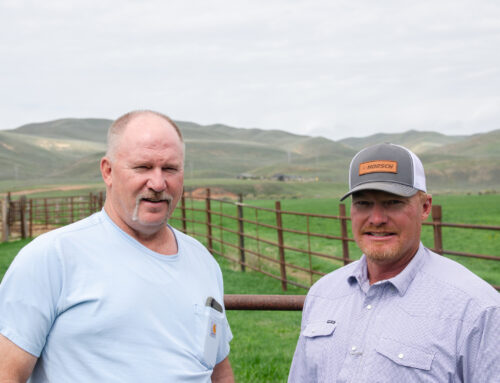Why Virtual Power Plants are a climate solution for our divided times
May 9, 2025
Tens of thousands of homes equipped with rooftop solar and home battery storage in California and Texas are linking up in the latest examples of a growing and innovative energy solution called the Virtual Power Plant (VPP).
Proponents say these carefully managed networks of home batteries and renewable energy can help grid operators avoid the use of more polluting power generation sources, cutting emissions and saving money for consumers.
Two big announcements since May 1 show the growing appeal that VPPs hold for utility companies and state regulators searching for ways to meet growing electricity demand.
In California, clean energy provider Sunrun announced that it has quadrupled the size of its VPP, called the CalReady power plant, to become one of the country’s biggest distributed battery networks.

By linking thousands of home solar and battery storage systems together, a Virtual Power Plant can cut power costs and greenhouse gas emissions.
Photo-illustration by Newsweek/Getty
“We take tens of thousands of those batteries, network them together with software and provide energy to the grid as though it was a single power plant,” Sunrun Head of Grid Services and VPP Christopher Rauscher told Newsweek.
Rauscher said the VPP can provide 375 megawatts of electricity at its peak, enough to power 280,000 homes.
This week battery maker sonnen announced a VPP initiative in Texas with its partners Abundance Energy, a retail electricity provider, and energy technology company Energywell.
Many Texan homeowners have been adopting a mix of rooftop solar and battery storage to save energy costs and to add a backup energy source when storms knock out power. As Newsweek reported in July, Houston area residents with solar and storage were able to keep the lights on after Hurricane Beryl knocked out power to more than 2 million customers.
Blake Richetta, chairman and CEO at sonnen, Inc., USA, told Newsweek that a VPP adds another benefit: lower rates.
“It’s cheap because we’re using your solar in a more purposeful and thoughtful way, and because of that, the battery creates monetization,” Richetta said. “And for you, Mr. Customer, all it means is a really low rate.”
A VPP appeals to power companies because it can enable them to avoid using some of the most expensive and most polluting sources of power, what are called “peaker plants.”
Traditionally, times of peak electricity demand would require a company to start up a short-duration power supply to pump more electricity onto the grid, and these are usually gas-fired turbines designed to fire up quickly.
“The problem is, peaking power plants tend to be extremely inefficient and thereby expensive, and high CO2 emitters,” Richetta explained.
The VPP allows a grid manager to instead meet peak demand by drawing on power from the clean solar energy stored in thousands of home batteries, eliminating the need for the use of the peaker plant.
In the long run, both Richetta and Rauscher said, VPPs could help power companies avoid building some peaker plants altogether. That would be a big climate win as power companies plan for ways to meet the coming surge in electricity demand from electric vehicles, electrification of more home appliances and power-hungry data centers.
A report released in September by the independent climate and energy think tank RMI found that VPPs reduce costs by 20 percent and emissions by about 7 percent. The widespread adoption of VPPs could help power companies eliminate the need for 75 percent of new gas units, the report found, and cut anywhere from 12 to 28 million tons of carbon emissions by 2035. That would be about 2 to 4 percent of the total projected emissions from the U.S. power sector.
Rauscher said Sunrun has integrated VPPs into electric systems in California, which has a highly sophisticated grid operating system, and in Puerto Rico, where the electrical system struggles with equipment failures and severe budget constraints.
“That shows you that any utility in the country that is interested in having a virtual power plant can have one today,” he said. “Because every utility in the country exists on a spectrum between Puerto Rico and California.”
VPPs are also gaining ground across varied political terrain. Richetta said sonnen’s initiative in Texas is building on the success of another VPP developed earlier in Utah. He said that while officials and ratepayers in politically blue states will be interested in how a VPP can help cut greenhouse gas emissions, people in red states might find more appeal in how a VPP can cut energy costs.
“Both sides of the aisle, politically, people are ready,” Richetta said. That could make VPPs a climate solution that will work in a difficult political climate. “I really like the chances of the VPP, even now, in this political environment.”
Search
RECENT PRESS RELEASES
Related Post



